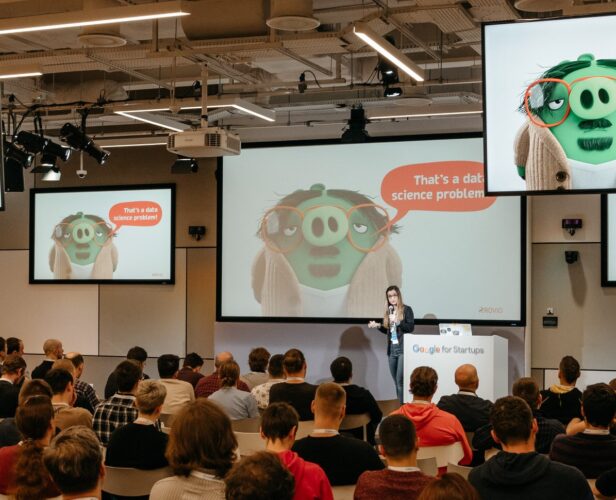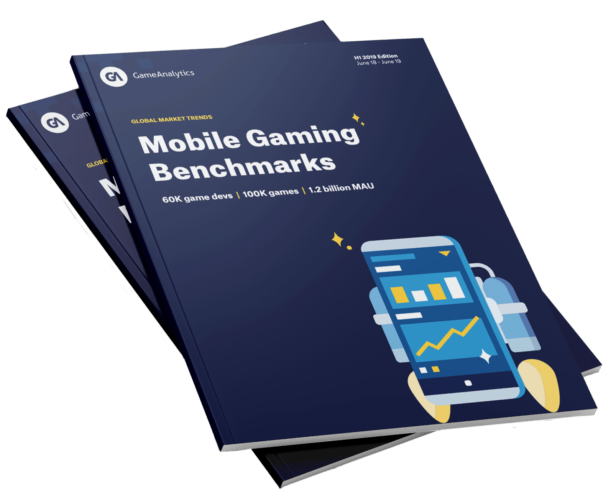Category
Data & Analytics
#Data & Analytics
What’s Their Secret? 4 Steps Successful Publishers Take to Find Hit Games
We’ve all asked ourselves this question: “How do publishers release hit game after hit game? How do they know which ones are going to be successful?”. Now, we don’t know all the ingredients to their secret sauce (be it their relationships with developers, network, or UA tools). But what we can do is go over what we know, and what we do best. Data. Data is a crucial part in finding the next big hit. But sifting through tens or hundreds of prototypes at one time is in itself, a massive challenge. Especially when your team is small. Step 1: Find more prototypes to evaluate In an ideal world, you’d open up your laptop and see key metrics (like day 1 retention, day 7, and Playtime) for a bunch of new games that were submitted yesterday. Well, you can. And...
#Data & Analytics
How to calculate ARPU, ARPPU, ARPDAU and more
Metrics like Average Revenue Per User (ARPU) or Daily Active Users (DAU) are like the coins you collect in a platformer: you want to rack them up, they’re sometimes fiddly to find and if you get enough they’ll give your game an extra life. Knowing these figures helps you figure out what you need to improve, predict how much you’ll earn, set yourself realistic targets and – fingers crossed – persuade investors to give you funding. So how do you calculate and use them? This is the first part in our series on key metrics you’ll need to know and today we’re going to cover: DAU, ARPU, ARPPU and ARPDAU. How to calculate DAU: Daily Active Users Count the number of unique players doing any action in your app on each day. 1. You’ll need to decide on what defines...
#Data & Analytics
4 features to look out for when picking a consent management tool
Editor’s note: This article was written by Nandi Gurprasad, head of Strategic Partnerships at Ogury. As GDPR and Privacy is usually a tricky topic, we’ve asked them to dive into one of their recommended solutions: Ogury Choice Manager. GDPR and data-privacy isn’t exactly new. Unless you’re starting up a new business or company, you’ve most likely heard these terms and have a rough idea of what it’s about. But what a lot of people may not know is that GDPR isn’t a one time thing. The advice from Data Privacy Authorities (DPAs) is evolving, constantly. And a lot of smaller companies tend to set up their policy once and don’t think about it ever again. When in reality, compliance is an ever-evolving process that needs your attention. To give you an example, advice from the Data Protection Authorities is updating...
#Data & Analytics
5 A/B tests to run during your soft launch
As we released A/B testing last month, we thought we’d share a few tips, tricks and ideas on how to make the most of your experiments. So put on your lab coat, fire up the flux capacitor and let’s get to sciencing. If you’re new to A/B testing, it’s a pretty simple concept. Send three variations of your game out into the wild: A, B and a control group. One group of your users sees A, another sees B and the last sees no change at all (your control group). You pit them against each other and see which performs better. It’s survival of the fittest in action. But when should you start your A/B tests? And what exactly should you be testing? Your soft launch is the Goldilocks zone Before you can start testing, you need players. And the...
#Data & Analytics
Early Testing Strategies to Maximize Your Hyper-Casual Game’s Potential
Editors note: This article was written by Vivian Dong, Senior Publishing Manager at JoyPac. This is based on their most recent webinar, which you can watch here. Testing is the most important part in the whole process of hyper-casual game development. When you have an exciting new game idea, you need to quickly answer the most fundamental questions: Will your idea be appealing enough to draw in players? When they download and play it, will they keep playing it? Will it make money? To answer these questions, you’ll need to start testing as early as possible. We recently hosted a webinar on early testing, along with Gabriel Stürmer, CEO at Clap Clap Games, and Kristina Truvaleva of Business Development & Global Partnerships at ZeptoLab. Here are ten lessons we took away from the webinar. Lesson 1: Test your idea’s marketability...
#Data & Analytics
How to find Hyper-Casual Success with Rapid Testing and Development
Editors note: This blog was written by hyper-casual specialists, JoyPac. JoyPac specializes in publishing hit hyper-casual games across the globe, and today they have agreed to share their insights into testing and developing hyper-casual games. On Wednesday, May 13th, we’ll be hosting a JoyPac webinar all about making successful hyper-casual games using rapid testing and development. This blog is your preview for the topics we’ll be discussing and some of the advice we’ll be giving. The hyper-casual mobile genre is evolving Hyper-casual mobile games use very simple gameplay and a business model based on in-game advertising. The genre emerged as a sort of backlash or nostalgic revival a couple of years ago. But even though it’s a fairly new genre, it’s already starting to shift. This evolution seems to be branching off into two sub-genres: Ultra-casual games—pushing the simplicity of...
#Data & Analytics
Mobile playtime increases by 62%, with IAP up by around 30% in Q1
As millions of people work from home or are on furlough, they’ve needed something to pass the time: streaming TV shows, learning instruments and, of course, playing games. At least, that’s the assumption. We dug into our data to find that playtime has soared and people are spending more, but each genre is affected differently. We’ve analyzed our data in two ways 1. Global network analysis Our first approach was to look at the overall data across our network. Over 75,000 developers use GameAnalytics to analyze how gamers are playing. That’s about 40,000 active mobile games, all in all, including 40 of the top 100 most downloaded games on the app stores. By combining all this data, we can see how more than a third of the world’s mobile players are behaving. Specifically, we analyzed playtime and how much people...
#Ads & Monetization
Customizing Rewarded Ads using Machine Learning – Lessons from Rovio
A couple of months ago, we had the pleasure of attending Google’s GameCamp, which was filled to the brim with gamedev content delivered from the best and brightest in mobile gaming. While there, Elif Büyükcan, the Business Intelligence Director at Rovio Entertainment, shared with us how they’ve been using rewarded ads in their games. We’re here to report on their story, and what you can learn from them. Elif’s main message was this: “Getting your monetization model right is incredibly important. It takes a lot of time, thought and testing. You need to be constantly measuring, learning and adapting. This makes machine learning (ML) and artificial intelligence (AI) your best friends.” And today, we’ll go through everything we learned from their talk (specifically about machine learning), including: The process Rovio use to hone their monetization models, a case study of...
#Data & Analytics
Wildlife Studios: Why Your Studio Needs Data Scientists
Editor’s Note: This article was originally published by Vitor Margato, Senior Data Science Manager at Wildlife Studios. You can read the original version here. Data science has been a hot topic for the past few years, but it’s often hard to understand what data scientists actually do in real companies. They seem to be behind whatever is going on when your favorite streaming app recommends you new songs, or when a ride-hailing app assigns you a driver, but what exactly is their role? In this post, I don’t try to describe how data scientists can help companies in general — I’ll focus on mobile gaming companies, because that’s where I have firsthand experience. Hopefully, some concrete examples will help you form a clearer picture of data science. But first, let me just take a step back to explain why I think those companies absolutely deserve...
#Data & Analytics
A Zeptolab Guide To Soft Launches
The purpose of this post is to share what I would say to myself if I was able to travel back in time to my first day as a product manager starting out in the industry. It reflects what I think is one of the most under-appreciated parts of the work: running effective soft launches. Too many games are ‘dying’ in soft launch. Too many teams don’t fully appreciate how markedly different a soft launch is from ‘regular’ live operations. This is something I personally wish I understood much better at the start of my career. It’s also something I find myself talking about a lot in my current role at Zeptolab Publishing, where I regularly meet with studios around the world. So if I had a few minutes to prepare my ‘past’ self for the challenge of this industry?...
#Data & Analytics
Three ways to reduce the costs of your HTTP(S) API on AWS
Here at GameAnalytics, we receive, store and process game events from 1.2 billion monthly players in nearly 90,000 games. These events all pass through a system we call the data collection API, which forwards the events to other internal systems so that we eventually end up with statistics and graphs on a dashboard, displaying user activity, game revenue, and more. The data collection API is fairly simple in principle: games send events to us as JSON objects through HTTP POST requests, and we send a short response and take the event from there. Clients either use one of our SDKs or invoke our REST API directly. We get approximately five billion requests per day, each typically containing two or three events for a total of a few kilobytes. The response is a simple HTTP 200 “OK” response with a small...
#Data & Analytics
Customizing Your Game for the Chinese Audience
Editor’s Note: this post was originally published by Arttu Anttonen, Game Analyst. Aside from turning Chinese games inside out, Arttu has a solid understanding of what works and what doesn’t in the mobile game market in the East. Everyone working with mobile games in the West already knows Archero. The successful shoot-em-up style ARPG-esque roguelike-ish action game, where players clear sequences of short levels of enemies with their archer hero while avoiding getting shot themselves. And, since many Western game developers struggle with the age-old dilemma of how to make their game more appealing to the Chinese audience, you could be asking yourself: “What would Chinese Archero look like?” Baozou Daxia has been grossing steadily since launch (source: GameRefinery service). Well, a textbook example of how to do it emerged in early September, although made by a Chinese developer, Dream of...
#Data & Analytics
Mobile Gaming Industry Analysis for H1 2019
100k titles. 1.2 billion+ MAU. A whole heck of a lot of data. Let's look at the state of the mobile games industry.












